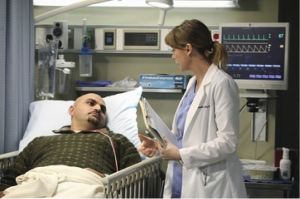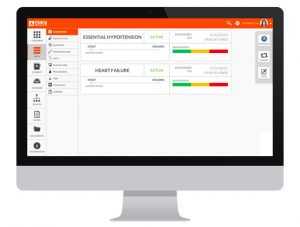Guest post by Sanjana Puri
Every spring, thousands of high school seniors gripe, moan, and complain about the seemingly unfair process that is elite college admissions. One complaint that stands out amongst them all: it’s done behind closed doors. Applications go in, acceptances and rejections come out, but nobody can see what happens inside.
But what happens when this door gets pulled open?
That’s what happened when a group of Stanford students asked the University in January for a copy of their admissions records. According to the New York Times, the university was forced to comply, in accordance with a federal law that has been in place for years. Students highlighted the 1974 Family Educational Rights and Privacy Act, which stipulates that students have a right to see their educational records.
Tina Fey in Admission (2013)
As someone applying to medical school, and a fairly recent alumnus of the college admissions process, I can sympathize with those who want to know the why in decisions. During the process, I felt both nervous and vulnerable. My admission into the most elite colleges seemed distant, behind a wooden door of admissions officers picking apart my carefully crafted application.
Translate that same feeling to a patient in a doctor’s office.
Patients eagerly await the arrival of results from a screening or bloodwork. When the doctor arrives, the diagnosis and treatment seem out of their control, perhaps instead behind the privacy of a blue curtain. Depending on the situation, it can be a nerve-wracking experience.
Curtain & Patient in Grey’s Anatomy
However, Stanford students took control into their own hands, empowering themselves and others throughout the country to level the information playing field. Many said the comments on their application records were frank, like they were never intended to be read. But honesty can facilitate quality of applicants, accountability of the process, and advice for the future.
It’s time for patients to take action.
Now more than ever, patients have the opportunity to take control of their health. In the digital age, patients can have access to a PHR, or personal health record, a collection of information (immunizations, allergies, medications, etc.) pertinent to a person’s health. While different from an Electronic Health Record, which is controlled by doctors, employers, and insurance companies, a PHR enables patients to share information with all care providers and manage their health in between patient visits.
Americans who have access to their health information through personal health records (PHRs) report that they know more about their health, ask more questions, and take better care of themselves than when their health information was less accessible to them in paper records, according to a ground-breaking study released by the California HealthCare Foundation (CHCF)in 2010. However, only a mere 7% of Americans had used a PHR.
Advocate for your health. Ask your doctor if they provide the option for a personal health record, and if not, encourage them to do so in the future.
The doors are open for you.








